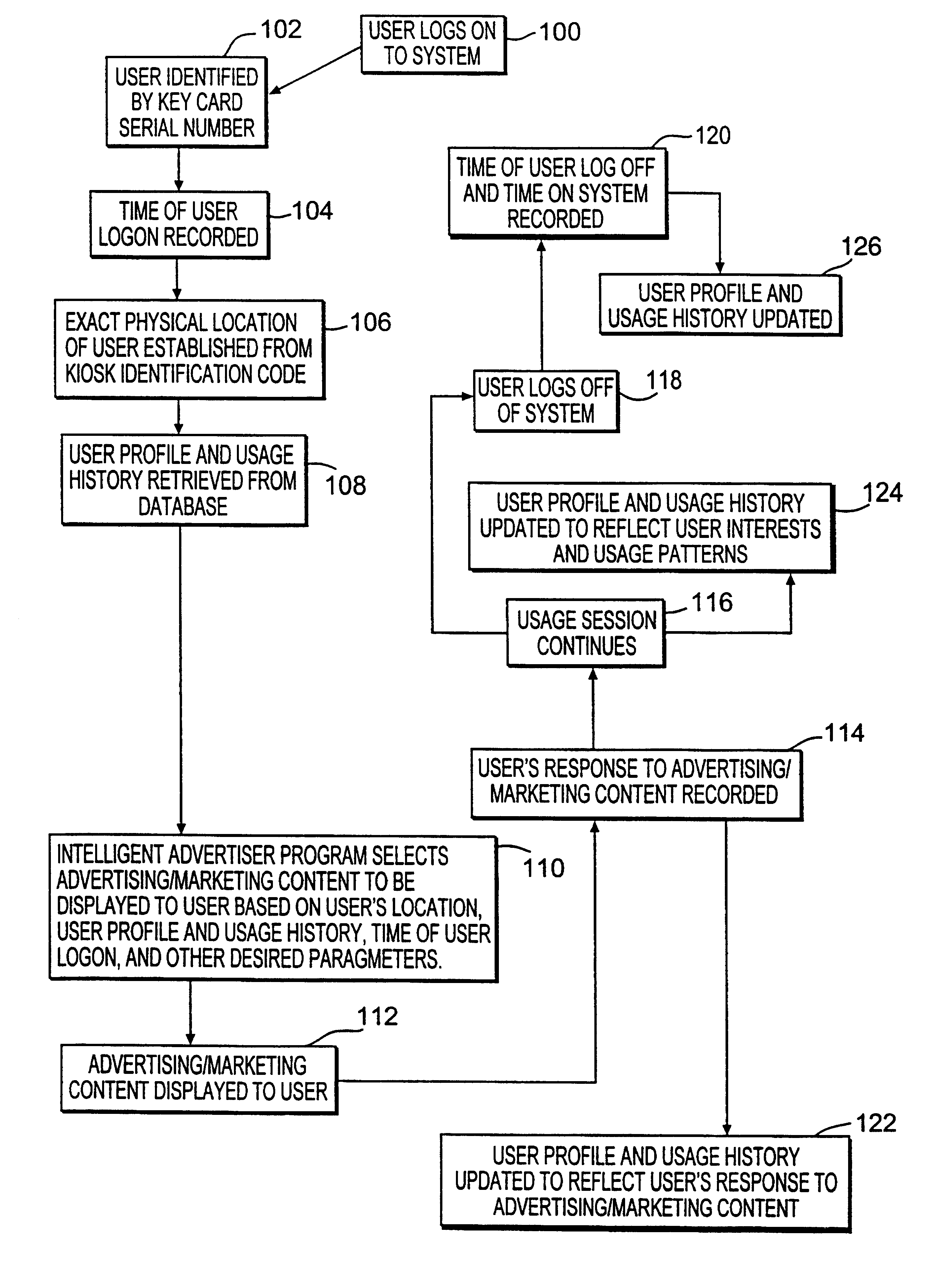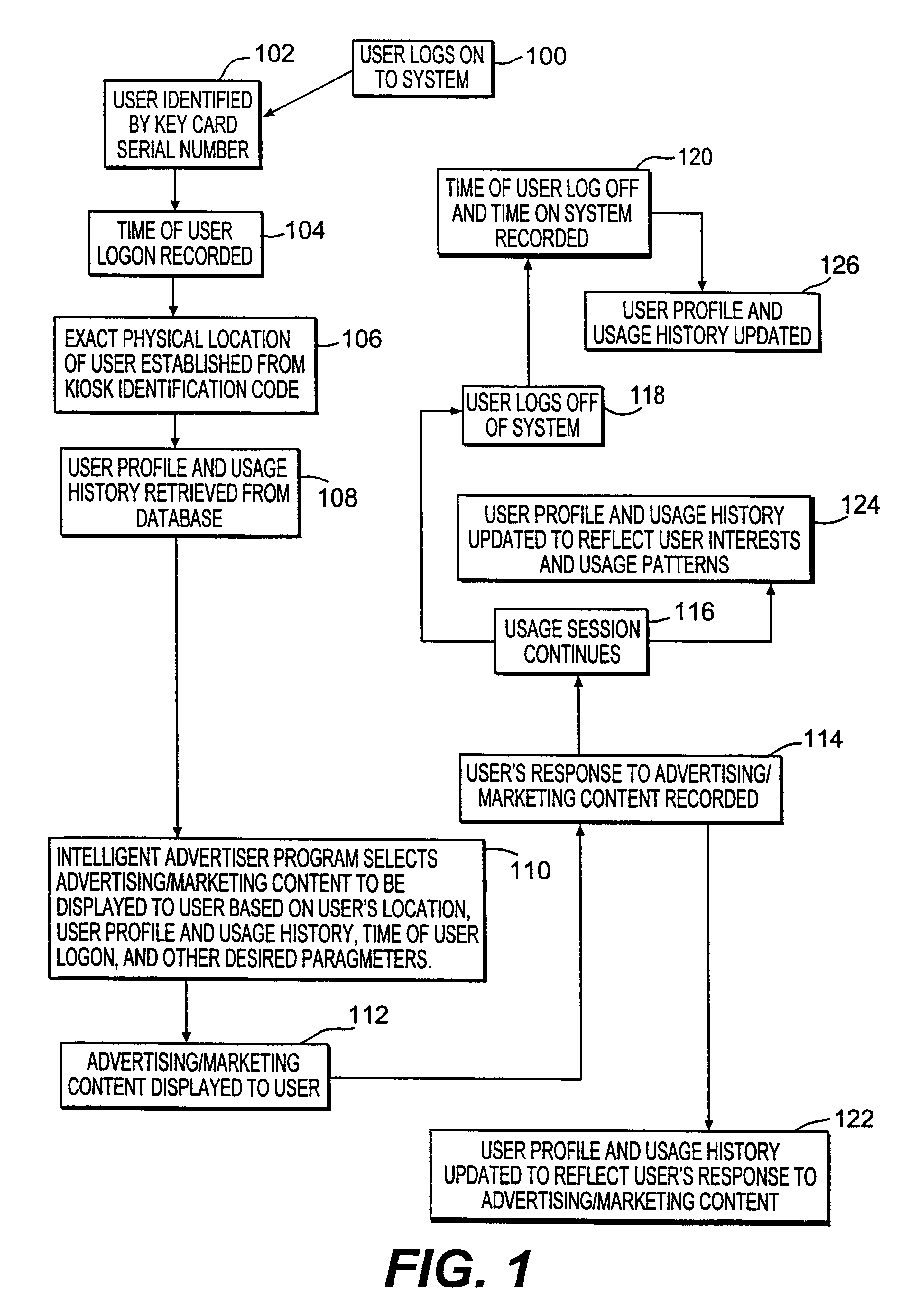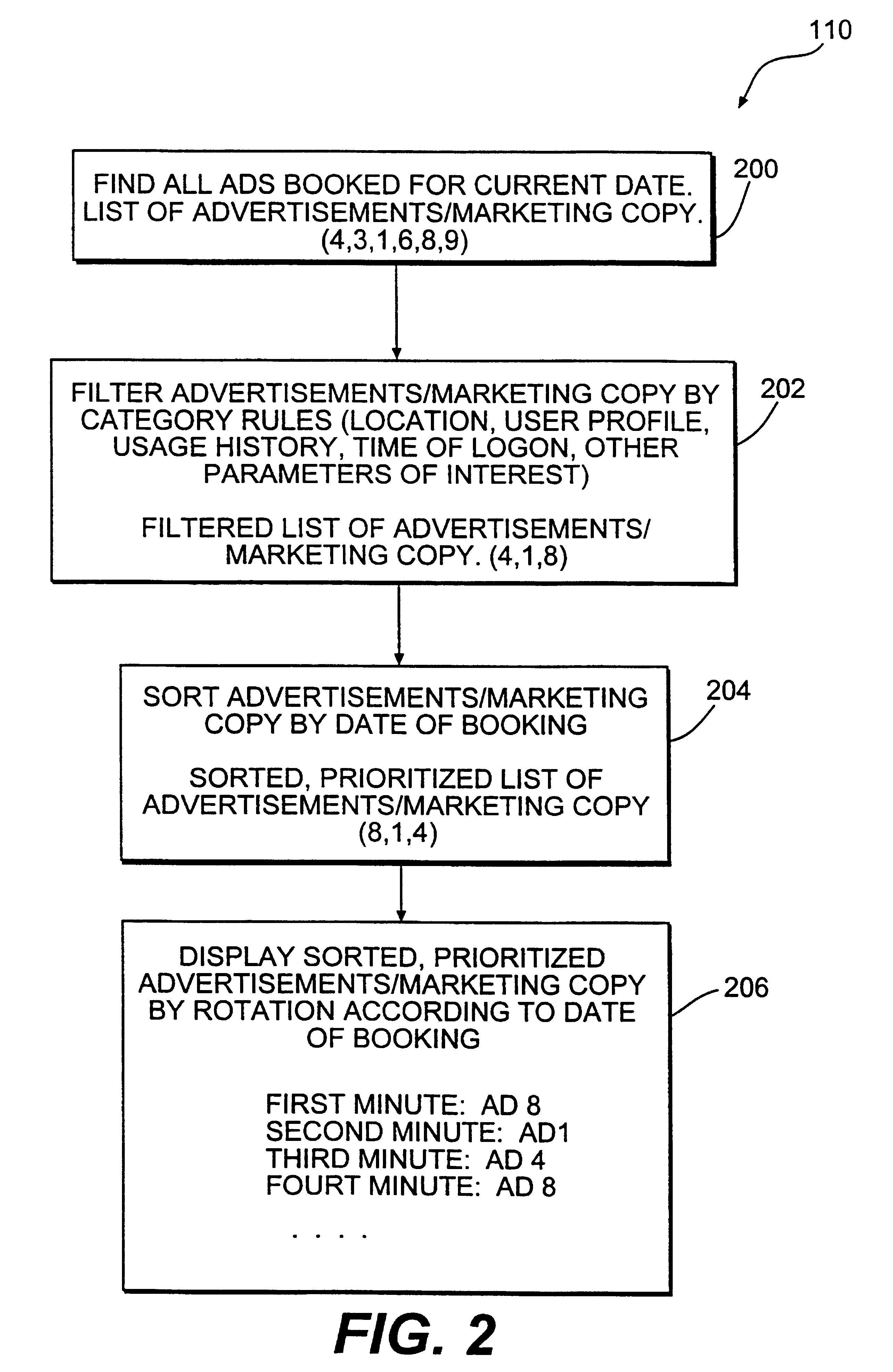Method and system for providing personalized online services and advertisements in public spaces
a technology of applied in the field of personalized online services and public spaces, can solve the problems of not being able to effectively use the internet, the typical way of using the internet suffers, and the information in particular channels may be of little interest to users, so as to achieve the effect of not requiring time-consuming searching
- Summary
- Abstract
- Description
- Claims
- Application Information
AI Technical Summary
Benefits of technology
Problems solved by technology
Method used
Image
Examples
Embodiment Construction
The preferred embodiments of the invention are now described with reference to the figures where like reference numbers indicate like elements. Also in the figures, the left most digit of each reference number corresponds to the figure in which the reference number is first used.
As shown more fully in the Figures, a system in accordance with the present invention provides a network of public access terminals (“CAT / PC”) in public places to provide information services to a community of users, preferably at no cost. A unique identification code is provided for each terminal, which pinpoints the exact physical location of the user each time he or she uses the system from a public terminal. The exact location of users accessing the system from the home or office via a web site will generally not be known. However users may provide address information allowing the system to determine the exact location. Prior art Internet-based commercial applications do not attempt to determine or utili...
PUM
 Login to View More
Login to View More Abstract
Description
Claims
Application Information
 Login to View More
Login to View More - R&D
- Intellectual Property
- Life Sciences
- Materials
- Tech Scout
- Unparalleled Data Quality
- Higher Quality Content
- 60% Fewer Hallucinations
Browse by: Latest US Patents, China's latest patents, Technical Efficacy Thesaurus, Application Domain, Technology Topic, Popular Technical Reports.
© 2025 PatSnap. All rights reserved.Legal|Privacy policy|Modern Slavery Act Transparency Statement|Sitemap|About US| Contact US: help@patsnap.com



